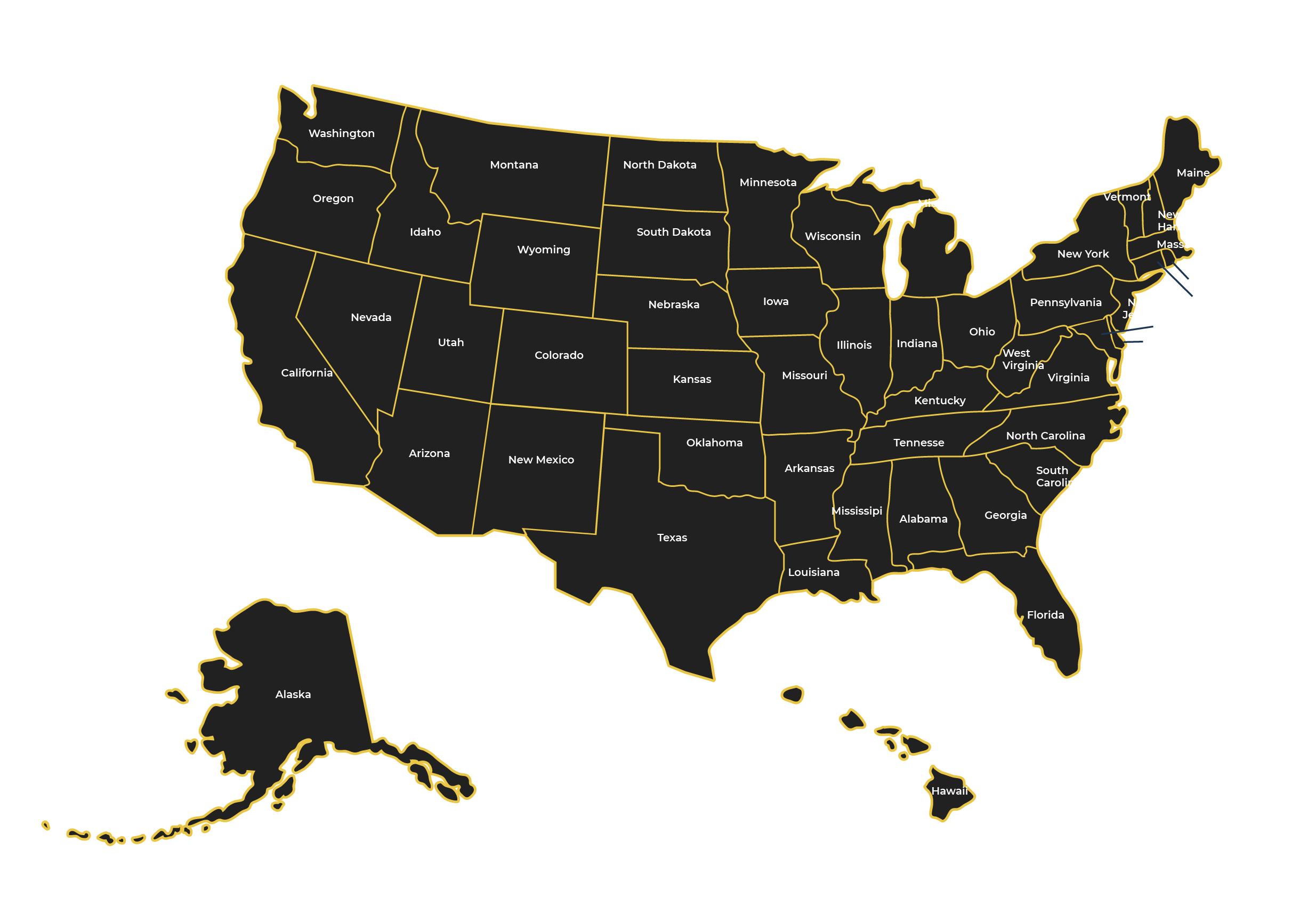USA
USATrademark Registration Process


01. INITIAL TRADEMARK SEARCH
Mahtta & Co. strives to make the the trademark registration process smooth. We offer to conduct a trademark search for your proposed mark to give you an idea of how registrable your mark is in the country/ countries you’d like to file.
Free Trademark Search:
- A free trademark search is a preliminary search that can be conducted by anyone with internet access. It's typically performed using online resources and databases that provide information on trademarks, such as the United States Patent and Trademark Office (USPTO) website, various search engines, and trademark databases like TESS (Trademark Electronic Search System).
- The purpose of a free trademark search is to check if a specific trademark or a similar one is already in use or registered by someone else. It helps potential trademark applicants determine if their proposed mark is available for registration or if there might be conflicts with existing trademarks.
- Keep in mind that while free trademark searches are useful for initial research, they are not comprehensive or official. They may not uncover all potential conflicts, and they don't provide legal protection. For a more thorough and legally recognized search, you should consider an official trademark search.
Official Trademark Search :
- An official trademark search is conducted by the USPTO or by a qualified trademark attorney or professional search firm. This type of search is comprehensive and thorough, aiming to identify not only exact matches but also similar trademarks that could potentially create confusion in the marketplace.
- The USPTO offers the Trademark Electronic Search System (TESS), which is a valuable tool for conducting official trademark searches. Official trademark searches may include searching federal and state trademark databases, as well as common law sources, to ensure that your proposed trademark is unique and unlikely to infringe upon existing rights.
- While official trademark searches provide a higher level of confidence in the availability of your trademark, they often require the expertise of a trademark attorney or professional who is familiar with the complexities of trademark law and the search process.

02. PREPARING YOUR APPLICATION
If the search results are positive and the mark looks registrable, we can start preparing your trademark application. To help us prepare your application, we’ll need to know :
- Who the trademark owner will be
- If we are filing for your word mark or your logo (we usually make suggestions during the search)
- What goods and/ or services you’d like to include, and
- If you’d like to file under intent to use your mark or actual use of your mark
INTENT TO USE VS ACTUAL USE
If you are already selling your goods or offering your services in the US, you can file for those goods and/ or services under “actual use.” To prove your claim of actual use, you will need to provide what is called a specimen - in other words, an unedited photograph - which clearly shows your mark on the goods and/ or services or the product packaging, sales invoices, purchase invoices, advertisements, etc. A specimen is required for each class of goods/ services you file for. In addition, you will need to provide the date of your first use of Trademark in USA.
If you are filing for goods and/or services you plan to sell in the near future, you will file for those goods and/ or services under “intent to use.” After your application has received a “Notice of Allowance”, you will be required to file a Statement of Use attesting to the fact that you have started using your mark on all of the goods and/ or services listed in your application. Declaration of Use allows trademark owners to keep their trademark registration alive. It is a signed statement stating that a particular trademark is used in commerce in the US market.

03. FILING YOUR APPLICATION
- Next your application will be filed with the USPTO and we will drop you an email confirmation of the filing. - You will receive a trademark application number, You can check the status of your application anytime on the USPTO website with this application serial number. Please note, we cannot change the mark that you register for, or the goods listed in your application once you file. For this reason, the goods listed in your application must be an accurate description of your actual products.

04. EXAMINATION
Approximately three to six months after your application is filed, your application will be assigned to an Examination Attorney at the USPTO. This Examination Attorney will make decisions whether your application can move on the next step of the process.
USPTO OFFICE ACTION
If the Examining Attorney finds that changes must be made to your application (for example, the description of your logo must be amended to be more clear, or to clarify certain goods and/ or services included in your application), or that your mark is confusingly similar to another prior-filed mark or registered mark, an office action will be issued.
A response to the office action must be filed to the Examination Report by the USPTO. The failure to respond to all the changes required by the Examining Attorney will be considered an “incomplete” response and may jeopardize your application.

05. PUBLICATION
After USPTO office actions have been responded to and all outstanding issues have been resolved, the Examining Attorney will approve your mark for publication in the Official Gazette. This does not mean that your trademark is registered; rather, your mark will be published for potential third parties to oppose your mark if they believe your mark conflicts with one of their own marks.
Receiving an opposition is quite rare. If no oppositions are filed against your mark within the 30-day publication period, your mark will proceed to the next step in the registration process.

06. ALLOWANCE
If you filed your application based on an “intent to use,” approximately six weeks after the end of the publication period, your mark will receive a “Notice of Allowance.”
A Notice of Allowance indicates that your mark has been approved to proceed to registration pending the filing of a Statement of Use. The deadline to file this Statement of Use is six months from the mailing date of the Notice of Allowance.
Within this six-month period, you must prove to the USPTO, through filing a Statement of Use, that:
- You are using your trademark on all of the goods and/ or services listed in your application, and
- Your mark is being used in commerce To accomplish this, you must provide:
- Specimens: In other words, unedited photographs of your product which clearly show the product and your mark on the product or the product packaging.You must provide atleast one specimen per class listed in your application.
For any reasons, you cannot file a Statement of Use within the six-month period following the issuance of the Notice Allowance, you must file for an extension. Up to five extensions of six months each, can be obtained for any one mark.

07. REGISTRATION
If you filed your application based on “acual use,” and your mark has not been opposed by any parties, you will receive a registration certificate with a new registration number for your mark approximately six weeks after the end of the opposition period.
If you filed your application based on “intent to use,” and you have filed a Statement of Use, and that Statement of Use has been accepted by the USPTO, your mark will proceed to registration. A registration certificate, with a new registration number for your mark, will issue approximately four to eight weeks after your Statement of Use has been accepted.
The whole process takes 8 months to over 2 years.
- Best Scenario: 8 months - Worse Scenario: 2 years or longer
Now that your trademark is registered, you can put registered mark symbol : ®

08. POST-REGISTRATION MAINTENANCE
After your mark has been registered, you must “maintain” your mark to keep it active. Other than continuing your mark on all of the goods listed in your application, you must also file a Section 8 declaration between the 5th and 6th year after your mark has registered.
You may want to also consider filing a Section 15 declaration at this time, although it is not required.
Finally, you must file another Section 9 declaration to renew your trademark between the 9th and 10th years after your mark has been registered.
What is a Section 8 Trademark Declaration?
A Section 8 Trademark Declaration is a crucial document submitted to the United States Patent and Trademark Office (USPTO) as part of maintaining your federal trademark registration. It serves as a confirmation that your trademark has been in continuous commercial use for five years since the date of registration. Failure to file this declaration on time can lead to the loss of your trademark registration.
Requirements for Section 8 Trademark Declaration
Between the fifth and sixth anniversaries of your federal trademark registration, you are required to file a Declaration of Use, also known as a Section 8 filing. This declaration serves as your sworn oath that the trademark is still being used in commerce. It should include a description of the goods or services associated with the trademark and should be accompanied by examples of the trademark's usage, which could include images of products bearing the trademark.
If there have been circumstances that temporarily prevented the continuous use of your trademark, such as fire, illness, natural disasters, or other damages, you must provide an explanation. Importantly, nonuse must be temporary, and you must have plans to resume commercial use after resolving these issues.
Importance of a Section 8 Trademark Declaration
Failing to file your Section 8 Trademark Declaration on time can lead to the loss of your trademark registration, which can be detrimental to your business. Therefore, it's crucial to ensure that your trademark has been continuously used and to file the declaration promptly when required.
Additional Sections: Section 9 and Section 15
- Section 9: This section requires you to demonstrate the use of your trademark every ten years. You can combine the Section 8 and Section 9 filings into a single submission known as a Combined Section 8/9 Filing.
- Section 15: In addition to Sections 8 and 9, you should also be aware of Section 15, which is a Declaration of Incontestability. This third type of trademark filing is not mandatory, so your trademark cannot be canceled if you opt not to file it.
Section 15 is an affidavit claiming incontestable rights to your trademark for specified services or goods. In order to file a Section 15, you must provide evidence of:
- Your trademark's validity - The trademark's registration - Your ownership of the trademark - Your exclusive right to use the mark
Under the Lanham Act's Section 15, you can claim incontestability when:
- There hasn't yet been a final decision against your claim of ownership or right to register the trademark - No proceeding pending exists - It's within one year of a five-year period of consecutive and continuous trademark use from the date of registration - The mark hasn't become generic - Filing a Section 15 gives you an extra advantage if you ever need to go after anyone who infringes on your trademark.
Deadline and Consequences
The deadline for filing your Section 8 Declaration of Use falls between the fifth and sixth anniversaries of your federal trademark registration. Additional filing deadlines occur between the ninth and tenth anniversaries and every 10 years thereafter. Missing these deadlines may necessitate reapplying for federal trademark registration. However, it's essential to note that even if your federal registration is canceled, your trademark still enjoys protection under state and common law, though you lose the benefits of federal registration.
You can file within a six-month grace period after the sixth-anniversary date by paying an additional fee.

09. CONCLUSION
As the trademark registration process in the U.S. can take over a year, we strongly suggest that you consider filing your mark sooner rather than later. There have been instances where a client has waited to file for a mark until it was in “actual use,” and during that time, a competitor had filed for a similar mark. This forced our client to file for a different mark and to order new packaging reflecting this new mark.

